Some of the links in this post may be affiliate links.
With so many types of Snake Plants out there, the Whale Fin Snake Plant, or Sansevieria Masoniana, is definitely the king with it’s gigantic leaves! Although not as easy to come by as other Sansevierias, it makes for a very special plant in your houseplant collection.
Sometimes called Mason’s Congo Sansevieria, this snake plant is just as easy to care for as your others. Let’s take a look at a few care and propagation tips, and I’ll also show you my journey so far with this plant!
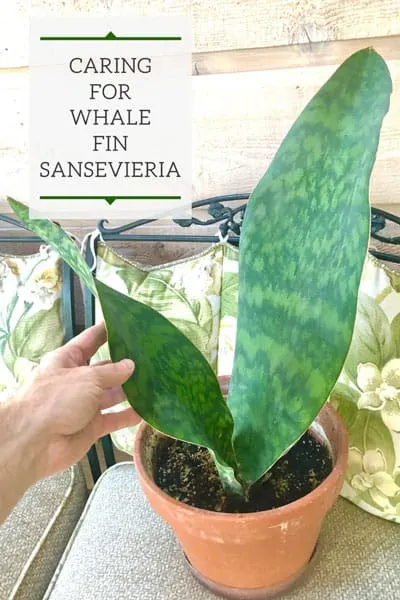
One of the perks of being active in the houseplant community on Instagram is forging friendships from other houseplant crazies such as myself and you can ship each other plants!
One of my plant friends in Florida found a Sansevieria masoniana and shipped it right up to me in Ohio! Here is what my plant looked like when it arrived:
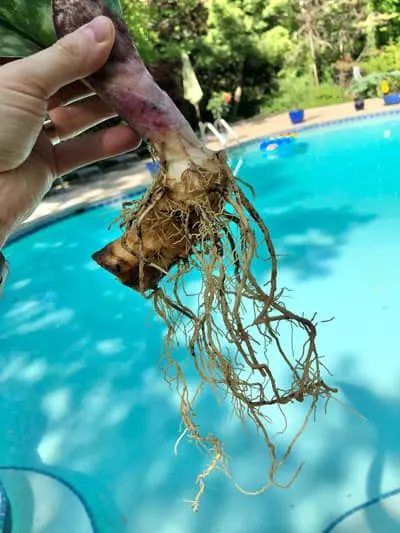
Soon after I received it, I potted it up in a terra cotta pot, gave it a good watering, and placed it in a good growing location. I’ll go into my care tips for Sansevieria shortly.
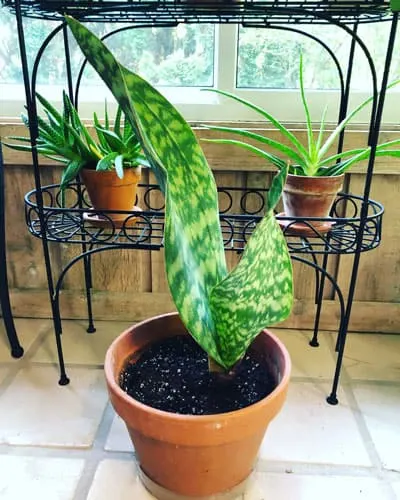
Most of the time when these plants are offered for sale, they are usually only a single leaf, or maybe two like mine above.
Table of Contents
Whale Fin Sansevieria Care
Standard snake plant care applies to this plant! Let me dispel a very common myth about Sansevieria though.
Although these are labeled as low light plants, you will not achieve best results if you shove this plant in a dark corner of your home.
Nor does it mean that they NEED low light. It just means that they will TOLERATE low light! Over time, your plant will slowly decline if your plant is not placed in good light.
The fact is, Sansevieria can grow in a good amount of direct sunshine. I’ve been fortunate enough to travel to Africa and have seen Sansevieria growing in semi-shaded areas under trees and some even in full sun.
Pretty much the opposite of “low light!”
Whale Fin Sansevieria is sometimes labeled with the cultivar ‘Mason Congo’ since it was initially collected in the Congo in Africa.
LIGHT
By all means, whatever you do, at a minimum you should make sure that your plant is as close to a window as possible. These plants would benefit from some direct sun indoors.
Eastern and Western exposure windows are great for these plants. I’m not discounting North windows though, especially if they are larger and unobstructed. A bit of direct sun is preferred though.
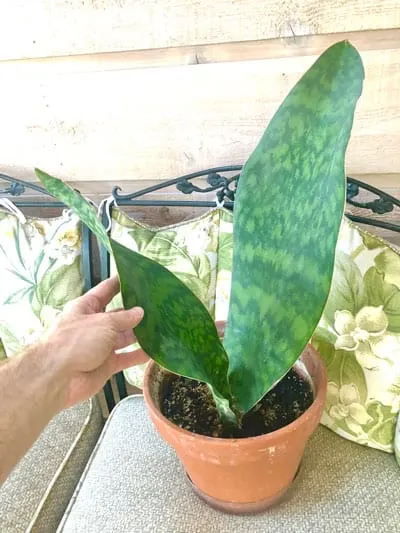
South windows, which are the brightest exposure, will also work! If you live in areas with very strong sun, you may want to filter the direct sun a bit. Since I live in Ohio, I don’t have much to worry about…
These are versatile plants indoors, but whatever you do, place them right in front of a window for best growth and results.
Just keep in mind that brighter light means that your potting mix will dry out more quickly. And that brings us to…
WATERING
Always water thoroughly. Yes, these plants need to dry out in between watering, but it is always good practice to water your plants throughly for a healthy root system.
This goes for ANY plant!
Be sure to throughly soak the soil around the whole pot until water seeps through the drainage hole. Discard the excess water and never allow your whale fin to sit in water because this will invite root rot.
This is easily done if you take your plant to your sink to water.
If you water your plant in place and have your plant growing in a pot with drainage holes, but it is slipped into a decorative cache pot, take special care. Be sure that you check to make sure that excess water hasn’t collected at the bottom of the cache pot.
If it has, discard the excess water.
After watering, allow your soil to dry out completely, or close to completely, and then repeat the watering process. Although it can tolerate quite a bit of neglect and extended dry periods between watering, try not to wait terribly long after the soil has dried out before watering again.
Your Whale Fin likes soil to grow in soil that dries out fairly quickly in between watering.
If you have your plant growing in good light, comfortable indoor temperatures, and use a well-drained potting mix, this should not be a problem!
I like to use my finger to check the soil moisture. You can also pick up your pot to feel if it has gotten substantially lighter. The good thing is that these plants are very tolerant of drought and won’t whine and whimper like some other plants.
Lastly on watering…I strongly advise against the usage of moisture meters. Check out my blog post on the 3 Big Dangers of Moisture Meters.
Another HUGE misconception is the topic of overwatering.
The next key aspect of growing this plant is having the proper soil mix.
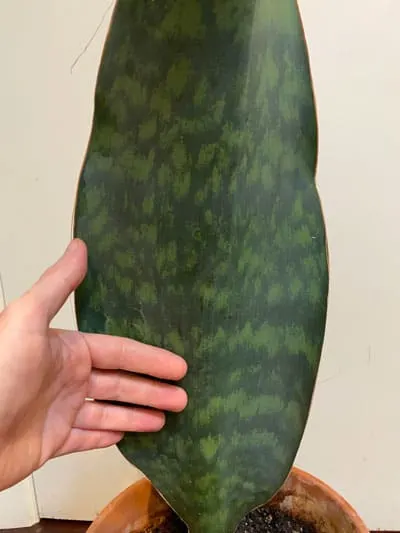
SOIL MIX and POTS
Sansevieria masoniana likes a sharply draining soil mix. For all my Sansevierias, I use about 2 parts of a good succulent/cactus potting mix and add 1 part pumice.
If I don’t have pumice on hand, I will use perlite but I really prefer pumice for plants like Sansevieria that need sharp drainage and need to dry out quickly.
I’ve used both Hoffman Cactus and Succulent mix and Miracle-Gro Cactus, Palm and Citrus mix successfully. Use two parts of either of these and are easily available on Amazon.
To your two parts of potting mix, add one part of 1/4″ pumice. I love using Bonsai Jack’s 1/4″ Pumice.
This mixture will give you a beautifully drained potting mix for your Sansevieria.
If you’re looking for an amazing potting mix that you can use straight out of the bag for your snake plant, check out the Tropical Succulent Soil Blend from Oh Happy Plants. This is an amazing mix and you will get 10% off at checkout automatically if you use my link.
As far as pots go, you can really use any type of pot as long as there is a drainage hole! I prefer terra cotta pots for Sansevieria because they dry out more quickly, and I also like the look of them.
If you’d like to read up more on terra cotta pots, I’ve written a great blog post on pros and cons of terra cotta pots that you may enjoy!
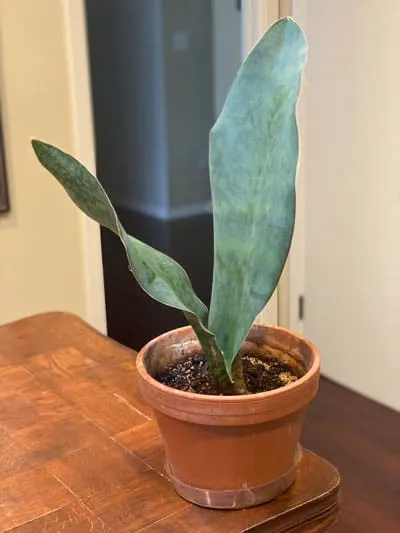
FERTILIZING
These plants are light feeders, but I still fertilize throughout the growing season with Schultz Cactus fertilizer.
You’ll want to use a lower nitrogen fertilizer like Schultz 2-7-7 Cactus Plus. And if you skip some applications throughout the growing season, your plant will forgive you.
This fertilizer is formulated to fertilize with every watering. Just follow the direction on the package.
And remember that fertilization is NOT a fix for poor culture! It should be used to supplement your plant’s growth. You should focus first on making sure you are providing the right light, watering, etc. first before thinking about fertilizing.
There is NO substitute for proper growing conditions!
PROPAGATION
A word of caution…these plants are SLOW growers! You will be waiting quite a while before you get any new growth!
My own plant took about a year and a half from the time I received it bare root to the time it finally sent out a new leaf! Needless to say, I was very excited when I saw it!
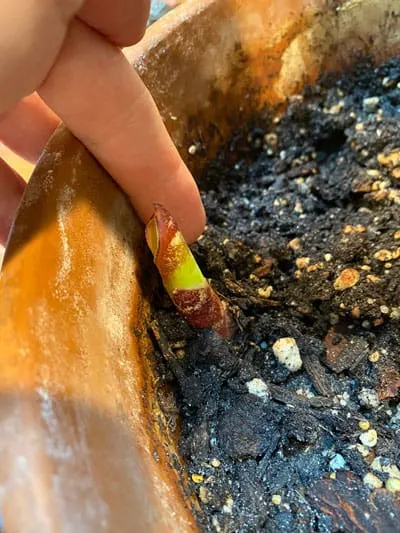
There are a 3 good ways that you can propagate this plant:
DIVISION
One way to propagate is by division at the roots. This will be the fastest method by FAR! If your pot has more than one leaf, you can use this method.
WATER PROPAGATION
Another way you can propagate is by water propagating a leaf cutting.
For more details, check out my step-by-step blog post on How to Propagate Snake Plant in Water. I’ll take you throughout the whole process so you can have success!
SOIL PROPAGATION
The last way you can propagate Whale Fin is by soil propagation. You can simply cut leaf segments and root them in soil.
Instead of rehashing all the steps in this post, check out my blog post on Snake Plant Propagation By Leaf Cuttings in soil.
SANSEVIERIA TOXICITY
Sansevieria is toxic to cats and dogs due to saponins according to the ASPCA.
WHY IS MY WHALE FIN PLANT CURLING?
The most common reason, by far, for why your whale fin is curling has to do with soil moisture. Although your Sansevieria can go for quite a long time without water, if you leave your plant dry for too long, the leaves will curl.
If you’ve left your potting mix to go bone dry, there are a couple things that you can do.
TOP WATER A FEW TIMES
Take your plant to your sink or even a bathtub or shower and give it a good, thorough watering. If you find that the water is streaming right through with little water being absorbed by the potting mix, you’ll either just have to keep watering from the top a few times in a row, or you can try to bottom water.
Avoid using cold water. Use room temperature or lukewarm water so it doesn’t shock your plant, and warmer water is also more easily absorbed by your potting mix.
BOTTOM WATER YOUR WHALE FIN
When soil has gone hydrophobic (this means that it repels water), it is more difficult to re-wet your potting mix, so you’ll have to work at it a bit. In these cases, the bottom watering method is best.
Potting mixes with peat moss will become hydrophobic when left dry for too long.
Simply take your whale fin, place it in the sink or bathtub/shower, and set it in a few inches of standing water. Again, use room temp or lukewarm water. Never cold!
Leave it there for 1-2 hours or so and allow it to pull up water through the drainage hole.
After 1-2 hours, if the top couple inches of potting mix still feel dry, simply water from the top once, allow everything to drain away completely, and place your plant back in its growing location.
That’s all folks! Do you have a Whale Fin, or Sansevieria masoniana, in your collection?
If you are looking for more varieties of snake plants to grow, check out my post outlining 13 beautiful snake plants that you can add to your collection.

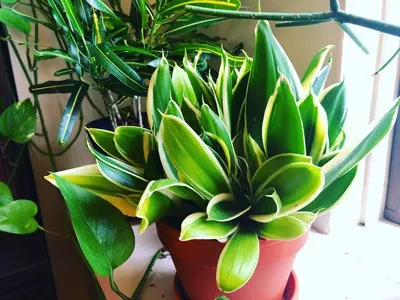
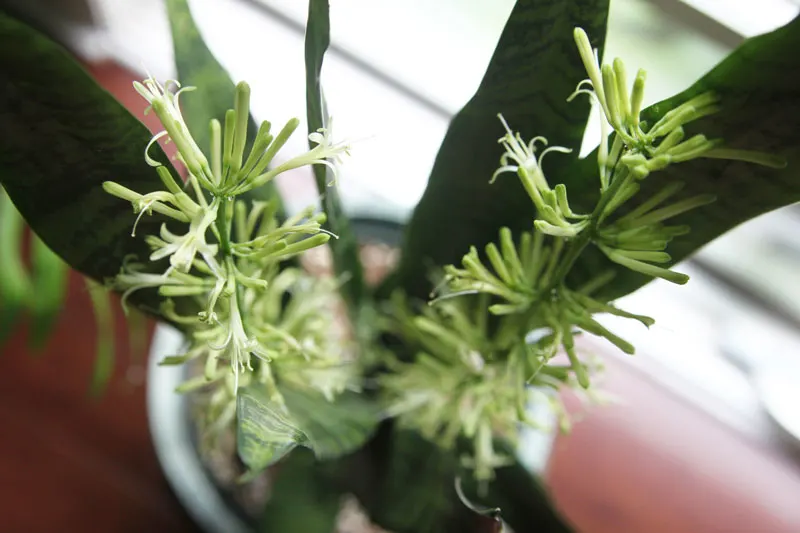
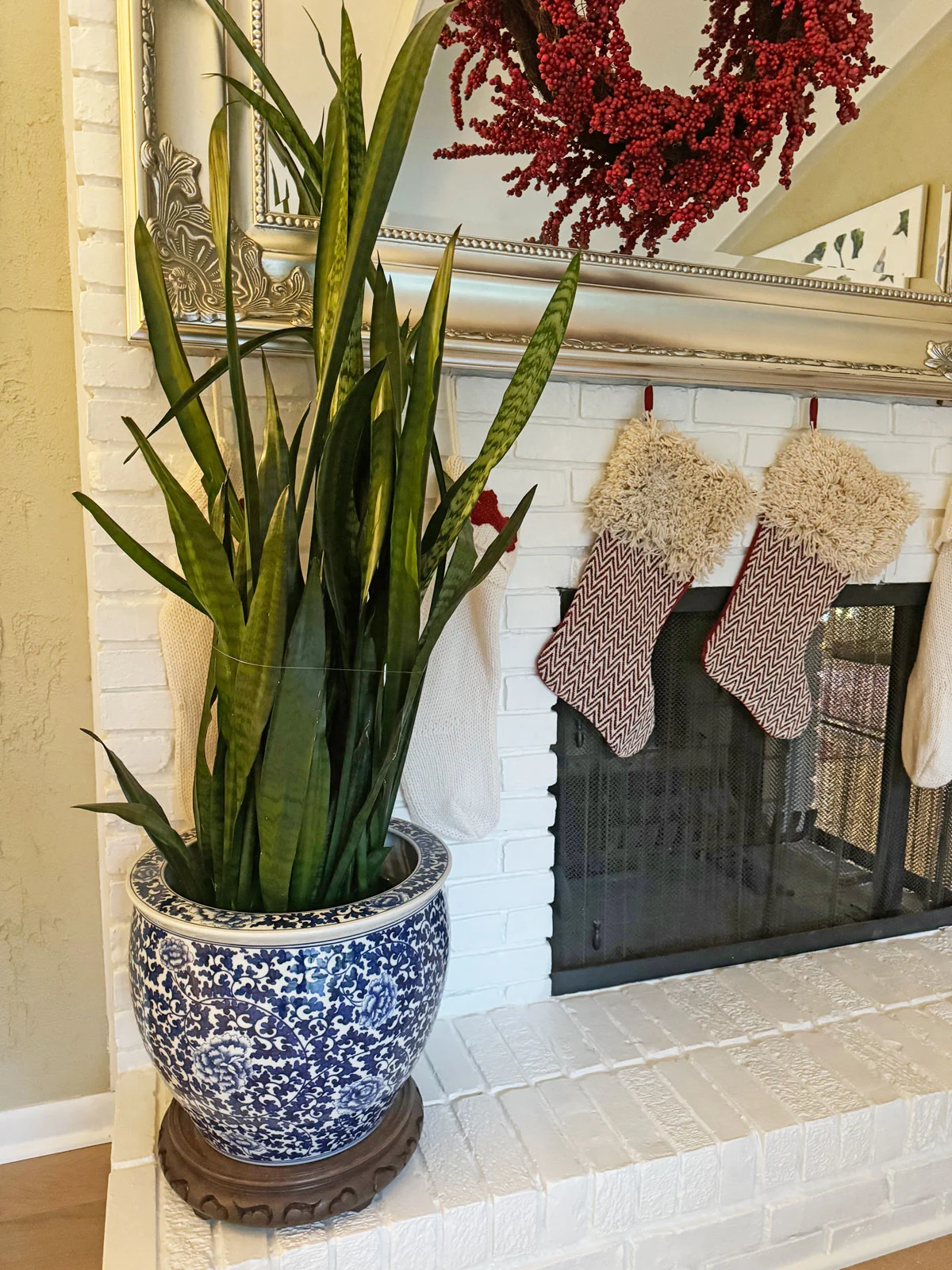
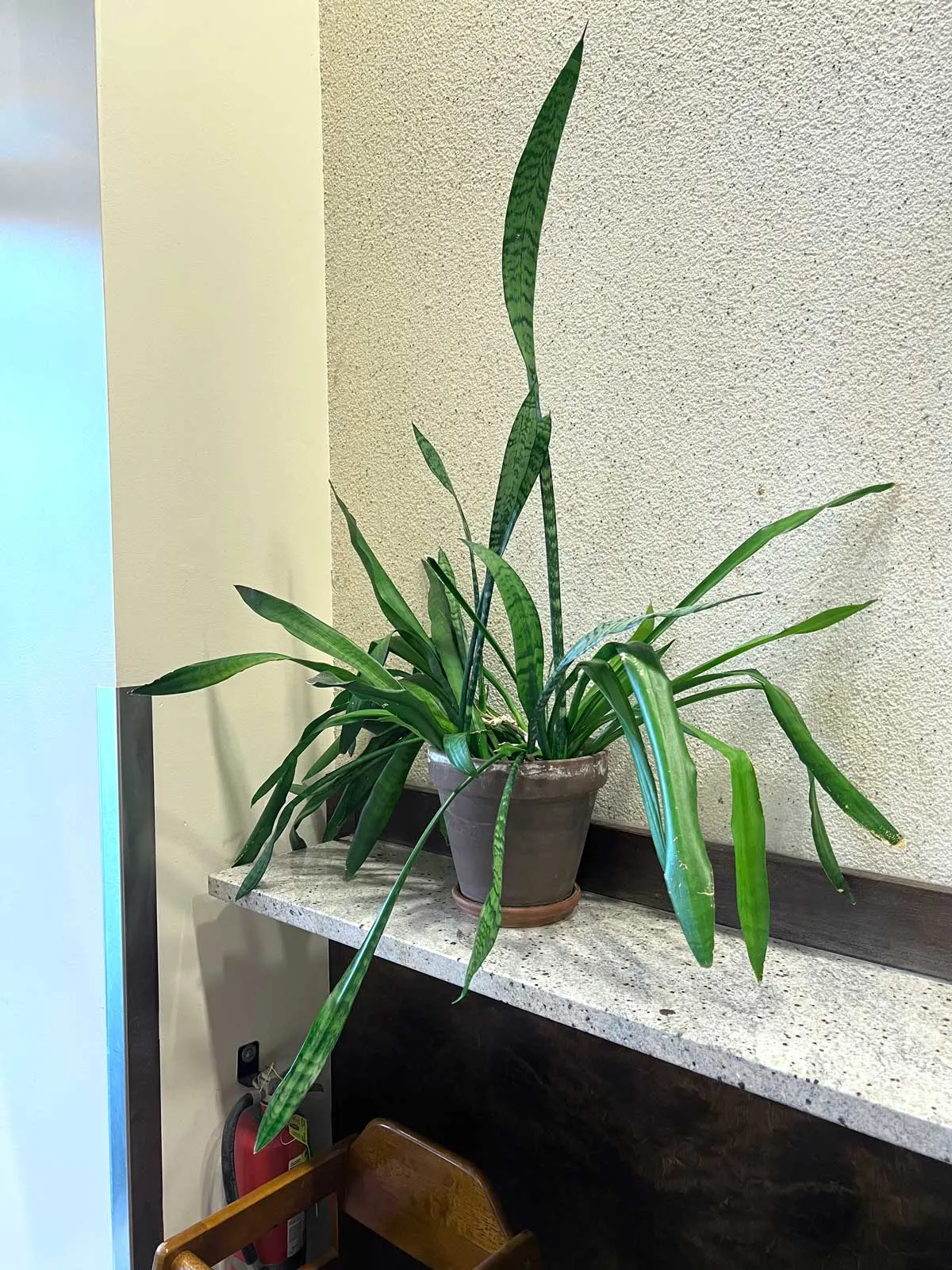
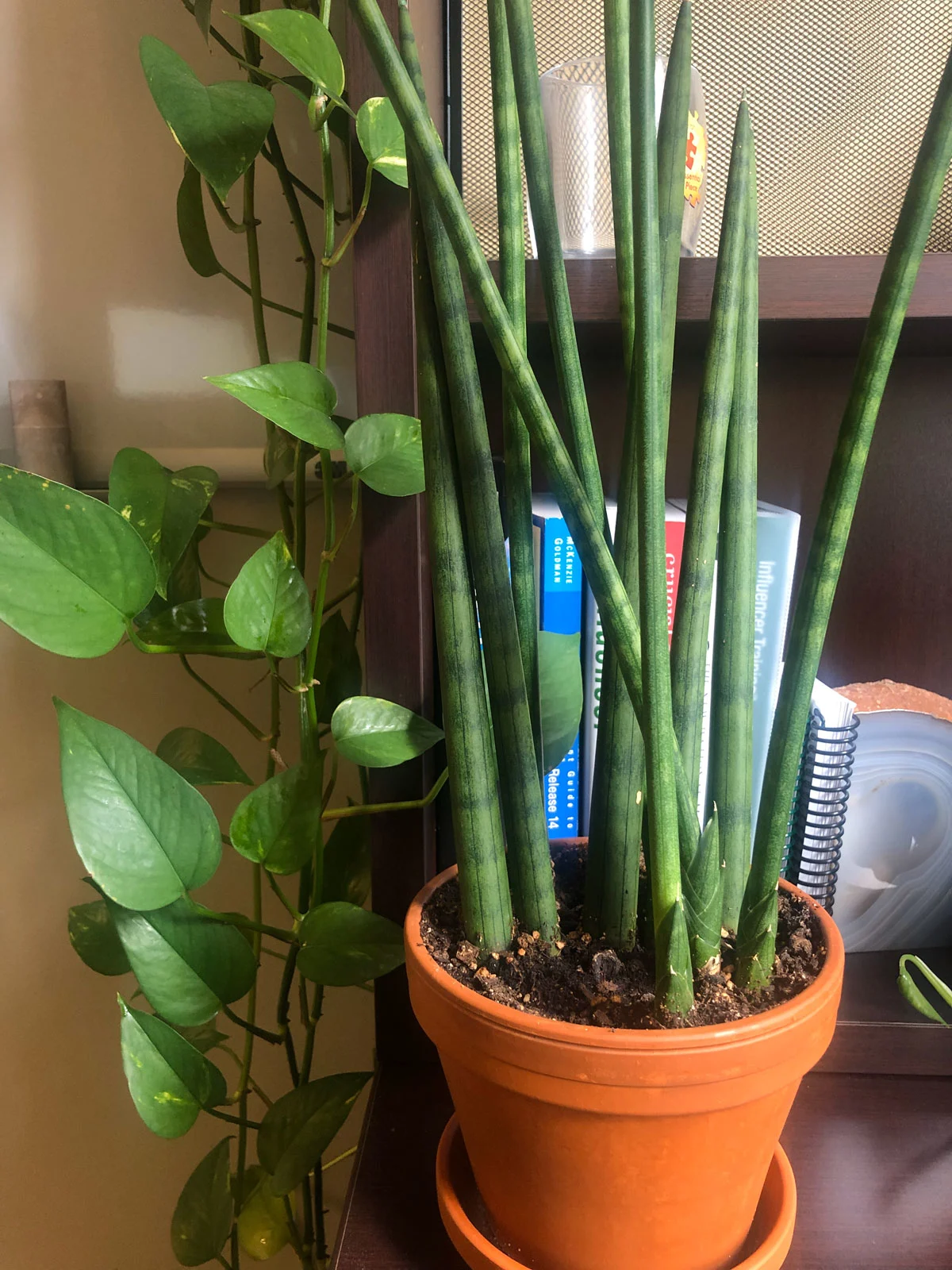
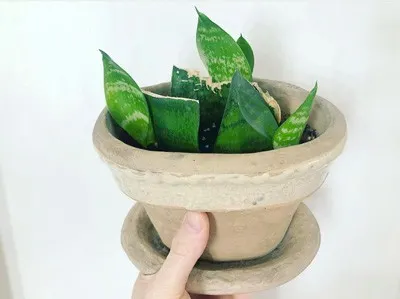
Cindy Griffing
Wednesday 8th of February 2023
I just “adopted” a Whale Tail plant from my daughter who recently moved out. I don’t believe the plant is doing too well as the border of the leaves have turned brown. One of the tips has also turned light colored and I can see what looks like filaments underneath, if that makes sense. I would like to try and see what I can do to help the plant, but I’m not quite sure what that is. I read somewhere else that once the borders start turning brown and the tips of the leaves are not doing well, that the plant is a goner. I hope that this is not the case. Any help would be greatly appreciated. Thank you!
Cindy Griffing
Wednesday 8th of February 2023
@Raffaele, Thank you for your reply. The plant is sitting on a bookshelf facing a large window. I just recently (a few days ago) took over care. My daughter said she’s had the plant for about a year. It’s still in its original plastic pot. I believe I’m going to need to repot it though as I believe some of the roots are actually on top of the soil. I’d like to know which repotting soil would be the best as well as what type/size of pot. I currently don’t have a plan as how to water the plant as I just took over its care. My daughter said the plant fell which caused the tip of the plant to become damaged.
Raffaele
Wednesday 8th of February 2023
Hi Cindy, there is still hope from what I hear. But I'd need to know more details on how you are caring for your plant in order to best help. Where your plant is growing, how long you've had it, what type of pot, any drainage holes, how you determine when to water, how you water, etc.
Lee
Tuesday 31st of January 2023
I just found some of these beautiful fins at my local home depot! They were $6.48 for what looks like a 6in pot! Snagged a couple! Each came with 3-4 fins! Super excited and thought I'd share!
Raffaele
Wednesday 1st of February 2023
Wow! That's a tremendous deal!
Beth
Monday 19th of December 2022
Hi, I’ve got a whale fin plant and I’ve noticed it’s got two purple bulbs/pups growing in the bottom of it. I don’t know what to do or if to take them off and put them in a new pot any advice would be greatly appreciated
Raffaele
Monday 19th of December 2022
I would just leave them and let them grow. Unless you want more plants...but they're better off attached to the parent plant.
LeSean
Friday 8th of July 2022
Hello, I have two whale fins my first one is doing well it has three pups already but the second one I purchased developed a dry spot and now the whole plant looks translucent. Any idea what's going on?
Raffaele
Friday 8th of July 2022
It's hard to say without knowing your conditions and how you care for it. Can you describe that a bit? Light, potting mix, your watering routine, how long you've had the plant, etc.
Stacie Segebart
Sunday 6th of March 2022
Dear OH tropics…. First off a huge thank you for posting your knowledge and sharing on the Whale Fin. Second needing rescue advice.. I came home from vacation and uggg…. My fin is yellow in the middle and as I suspect- too much water🤦♀️. I pulled the main tail out and the root is wet. Is there a way to save- Propagate? Happy to send a picture… (maybe a good blog material😂)
Raffaele
Monday 7th of March 2022
Hi Stacie! You can definitely propagate it! But do you know what happened that it stayed too wet? Was it sitting in water for a while? Do you know how long it stayed wet? Is there a drainage hole? It's important to know what happened so that you don't repeat it. I will email you now and if you can send some details and some photos, I'm happy to help!